U of T marine biologist dives deep in pursuit of ocean conservation data
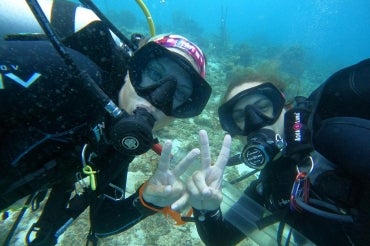
U of T Mississauga Assistant Professor Cassidy D’Aloia, right, and PhD student Taylor Naaykens, left, take a selfie underwater after completing a successful field season (photo by Cassidy D’Aloia)
Published: September 14, 2023
Cassidy D’Aloia dives deep to learn about life under the sea, yielding critical data and research for marine conservation efforts.
An assistant professor of biology at the University of Toronto Mississauga, D’Aloia studies the molecular ecology of coastal fishes and invertebrates and tries to understand the patterns, causes and consequences of dispersal and gene flow in the ocean.
Put simply, she tries to understand where the offspring of sea organisms wind up – whether fish, molluscs or echinoderms – and how larvae move around in ocean currents.
“Do you eat fish? Do you want to keep eating fish? Then dispersal data is important if you want to predict how fish populations will fare for the future,” says D’Aloia, who joined U of T Mississauga last year after completing her postdoctoral work.
As part of her research, she runs the D’Aloia Lab, where she and a team of graduate students work at the intersection of marine ecology, evolution and conservation biology, asking many interdisciplinary questions with answers that have profound implications for the future of marine life and conservation efforts.
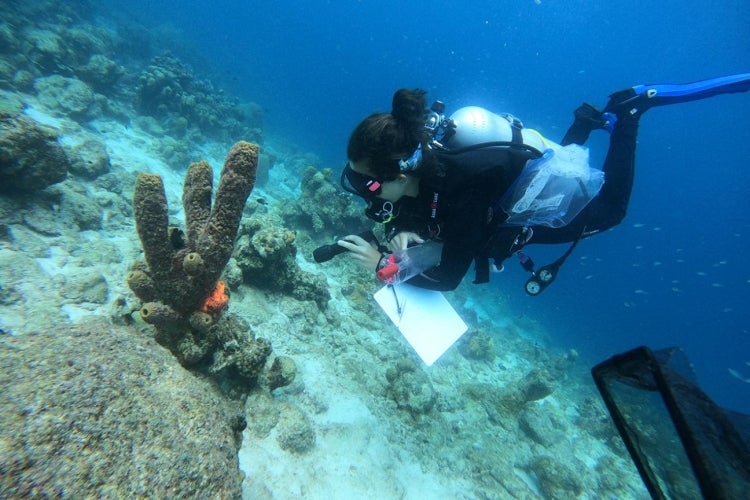
Scuba diving in the coral reefs
D’Aloia and her team often collect ocean life data by scuba diving. Dives have taken place in the southern Caribbean Sea off the coast of Belize or Curaçao, or in the North Atlantic off the coast of eastern Canada. Because much of their field work focuses on organisms living in coral reefs, they see firsthand the effects of climate change on the health of these ecosystems.
Diving off the coast of Belize this past summer, D’Aloia says she saw how damaged coral reefs have become.
“Corals are critical to marine biodiversity,” she says. “Rising ocean temperatures are a huge problem for coral reefs because of the impact. We study a lot of things that live on corals and this year the coral bleaching was bad.”
Coral bleaching happens when the water becomes too warm and corals expel algae living in their tissues, causing them to turn completely white. While the bleaching doesn’t necessarily kill the corals, it places them under more stress and makes them vulnerable to disease. That, in turn, can impact other species that are dependent on them, including humans that rely on the ocean for their livelihoods.
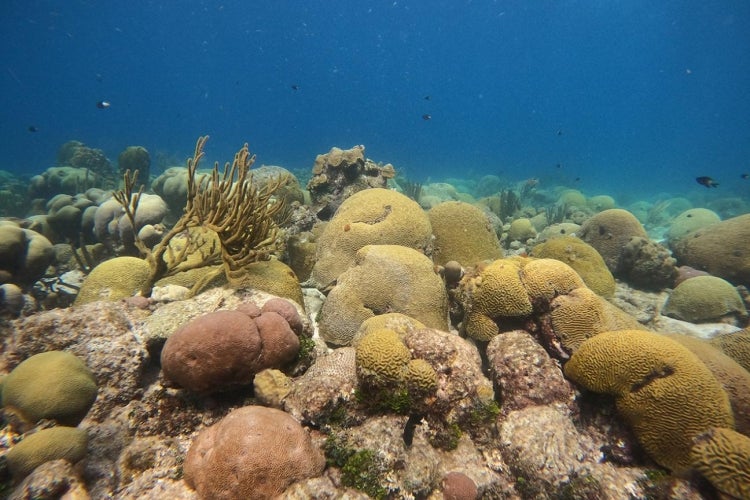
An average day in the field in Belize involves waking up at 6 a.m. to eat breakfast and ready the scuba equipment before getting to the water by 8 a.m. From there, D’Aloia and her team swim out to the coral reef and begin diving where they record data, map populations and collect tissue samples from tiny organisms for genetic analysis.
With a few breaks in between, the team makes deep dives three times a day before heading back to the field station by 4 p.m. to clean the gear, back up data, make dinner and sleep. The field work goes on six days a week for a month or two.
“Our field work is gruelling,” D’Aloia says. “But I just love it. Being in the field is by far the best part of the job. It’s a very special feeling being underwater – like visiting another planet. It’s a real privilege to be able to do that.”
D'Aloia has worked in Belize for many years, building and strengthening relationships with local fishers, the University of Belize and other researchers. Her work has led to several partnerships, including Fisheries and Oceans Canada. She works with the federal government department to develop science-based management plans for Canada’s fish stocks.
D’Aloia’s current research in Belize is funded by the Belize Fund for a Sustainable Future and U of T Mississauga, in collaboration with the University of Belize’s Environmental Research Institute.
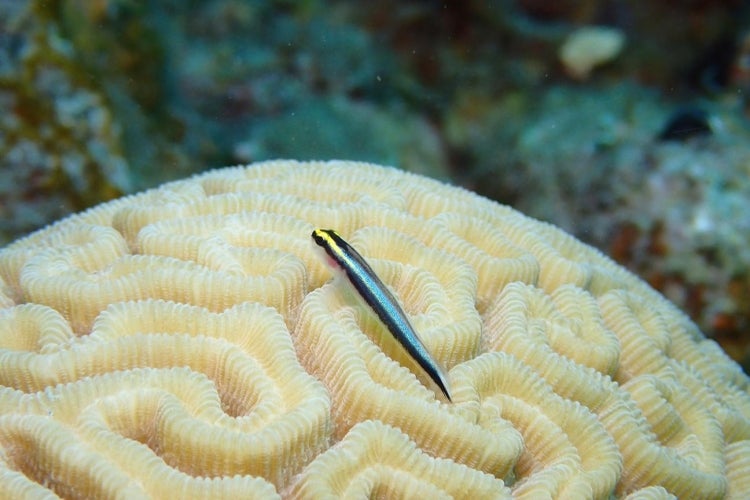
The importance of data
To understand how larval development of marine life is connected to conservation efforts, D’Aloia explores the consequences of larvae travelling far from their place of birth on ocean currents.
“We’re interested in how organisms move in the very early part of their life cycle,” she says. “It sounds simple, but it’s a tricky problem in marine biology.”
Larval dispersal determines how populations change over time and how they evolve. Species studied include snails, gastropods, cod, American lobster, sea cucumbers, hogfish and conch fish.
“Fish and harvested invertebrates are one of the last wild animals we still harvest in their natural environment, so I think it lends itself well to the integration of science and policy and trying to work together to give the fundamental scientific data that can help us make sustainable choices,” D’Aloia says.
“If we want to make decisions on spatial conservation, then you need this data.”
D’Aloia grew up in New York state, away from the ocean, but says she always loved science and biology. As a result of great high school teachers and encouraging university professors, she sought to become a marine biologist and “fell in love with the ocean.”
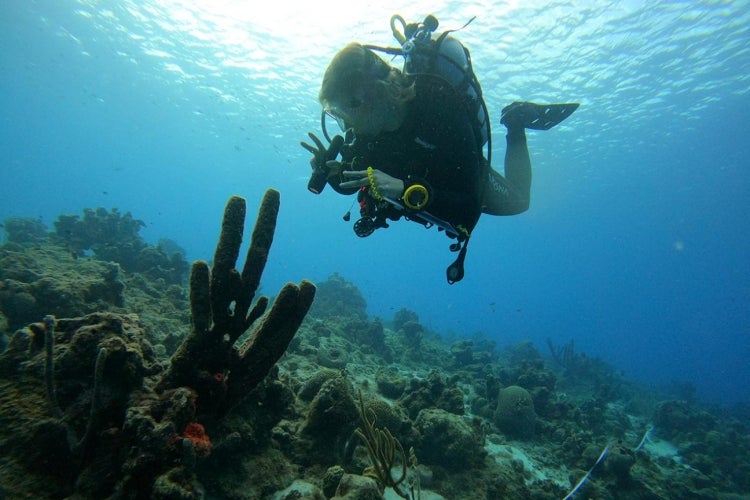
Now an assistant professor overseeing a team of graduate students, she offers training and support for students to conduct research and build their careers as marine biologists. That includes learning how to scuba dive.
“Research that can support the conservation of those ecosystems is so important,” D’Aloia says. “I think supporting students who are trying to pursue good research and want to make a difference in the world is a good thing.”



